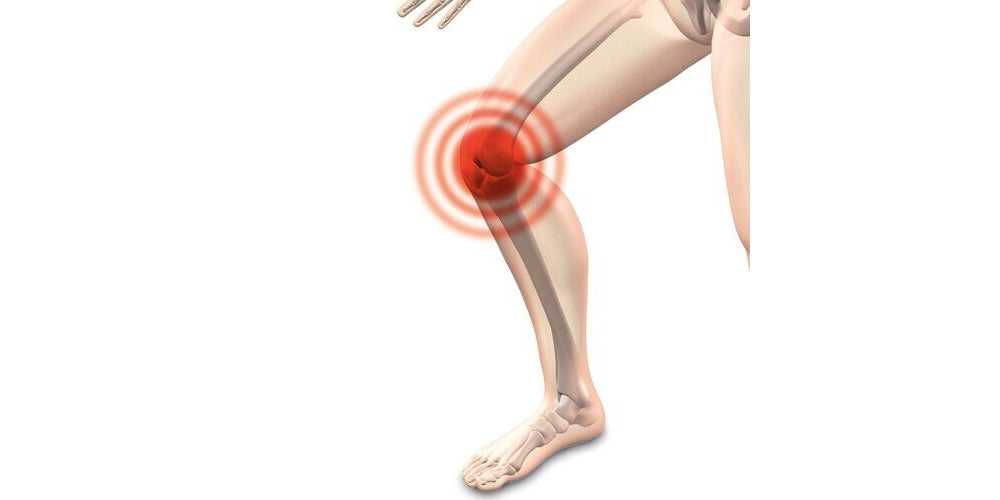
Red Light Therapy Knee: Revolutionary Pain Relief for Joint Health
2MegelinKnee pain is a common ailment affecting millions worldwide, significantly impacting mobility and quality of life. In the quest for innovative and non-invasive treatment options, red light therapy knee applications have emerged as a revolutionary approach. This therapy, rooted in scientific research, promises substantial relief for individuals struggling with knee pain and joint health issues. It combines technology and health care to provide a pain-free solution without the side effects of traditional treatments.
The article will explore joint pain and its debilitating effects on daily life, followed by a comprehensive overview of red light therapy. It will highlight how red light therapy knee treatments stand out as the best red light therapy for knee pain, including their efficacy in targeting knee cartilage and reducing inflammation and pain. By examining the best red light therapy for knees, readers will gain valuable insights into how this cutting-edge treatment can improve joint health and provide pain relief.
Understanding Joint Pain
What is Joint Pain?
Joint pain involves discomfort affecting one or more joints in the body, where the ends of bones meet, such as the hip joint where the thigh bone connects to the pelvis [1]. This discomfort can be constant or intermittent, manifesting as stiffness, aching, or soreness. Some individuals may experience a burning, throbbing, or "grating" sensation. Often, joints feel stiff in the morning but may loosen up with movement, although excessive activity can exacerbate the pain [1].
Common Causes of Joint Pain
The primary causes of joint pain include osteoarthritis, rheumatoid arthritis, gout, bursitis, and tendinitis [1]. Osteoarthritis, a type of wear-and-tear arthritis, develops as cartilage wears away, leading to pain and stiffness, primarily affecting individuals over 45 [1]. Rheumatoid arthritis, a chronic autoimmune condition, causes swelling and pain, often resulting in deformed joints [1]. Gout results from acidic crystals accumulating in a joint, causing intense pain and swelling, typically in the big toe [1]. Bursitis is usually caused by overuse, affecting areas like the hip, knee, elbow, or shoulder [1]. Tendinitis, inflammation of the tendons, commonly occurs from overuse, particularly in the elbow, heel, or shoulder [1].
What is Red Light Therapy?
Red light therapy, also known as photobiomodulation, is a non-invasive treatment utilizing specific wavelengths of red and near-infrared light to stimulate natural cellular processes. This therapy operates on the principle where light penetrates the skin and is absorbed by mitochondria, enhancing cellular metabolism and the production of adenosine triphosphate (ATP), crucial for cell function [2].
How Does Red Light Therapy Work?
In red light therapy, the skin is exposed to a lamp, device, or laser emitting red light. This light, primarily from LEDs (light-emitting diodes), penetrates deeper into the skin compared to other light forms, such as blue LED light used for treating surface skin conditions like acne. The mitochondria within the cells absorb this light, leading to increased energy production and enhanced cell repair and function [3] [3].
Benefits of Red Light Therapy
Red light therapy offers multiple health benefits, including pain relief, particularly from conditions caused by inflammation such as arthritis and muscle pain. It is effective in reducing morning stiffness in conditions like rheumatoid arthritis and can aid in muscle recovery post-exercise. Additionally, it promotes skin health by stimulating collagen production, which helps in reducing wrinkles and improving skin elasticity. Studies have also shown its effectiveness in treating acne and even in body contouring treatments, though these effects are often temporary [3] [4] [2] [4].
This therapy has been found to improve joint mobility and reduce muscle and tendon pain, making it a versatile treatment option for various musculoskeletal conditions. Furthermore, benefits such as improved sleep, reduced stress, and relief from depression have been reported, enhancing overall well-being [4].
Red Light Therapy for Knee Pain
How Red Light Therapy Alleviates Knee Pain
Red light therapy has been recognized for its effectiveness in reducing joint pain and enhancing the range of motion. This therapy works by penetrating the knee joint with specific wavelengths of light, which are absorbed by the mitochondria within the cells [5]. The process stimulates cellular activity and increases the production of adenosine triphosphate (ATP), leading to enhanced cell function and tissue repair. Additionally, it helps in modulating inflammation within the joint, thereby reducing pain and improving mobility [5].
Scientific Evidence Supporting Red Light Therapy
A substantial amount of research supports the use of red light therapy in treating knee pain. Studies indicate that this therapy can significantly reduce inflammation, a key contributor to joint pain, by modulating cytokine levels and promoting anti-inflammatory processes [2]. Furthermore, red light therapy has been shown to stimulate the release of endorphins, which are natural pain relievers produced by the body, thus providing relief from discomfort associated with conditions like arthritis [2].
Moreover, clinical trials have demonstrated that red light therapy can improve the function of the knee joint by promoting cellular proliferation and decreasing the factors that contribute to joint damage [5]. This makes it a promising non-invasive option for individuals seeking relief from chronic knee pain and mobility issues.
Conclusion
Through this exploration of red light therapy as a treatment for knee pain, we have uncovered a groundbreaking approach that not only promises to alleviate discomfort but also to enhance joint health and mobility. The discussion highlighted red light therapy's capacity to penetrate the knee joint, stimulate cellular activity, and modulate inflammation, all of which contribute to its effectiveness in reducing pain and improving the quality of life for those afflicted with joint issues. These findings underscore the therapy's potential as a significant advancement in non-invasive pain relief methods, backed by scientific evidence and clinical research.
As we consider the broader implications of red light therapy for knee pain, it becomes clear that this modality holds promising potential for revolutionizing the treatment of joint discomfort and related conditions. The therapy's ability to offer relief without the side effects associated with conventional treatments marks a pivotal shift towards more holistic and patient-friendly healthcare solutions. Future research and exploration into the intricacies of red light therapy will undoubtedly expand our understanding and application of this innovative treatment, offering new hope and improved outcomes for individuals grappling with the challenges of knee pain.
FAQs
1. Is red light therapy effective for treating knee problems?
Red light therapy has been increasingly supported by research and case studies for its effectiveness in treating arthritis. It has shown significant benefits in reducing pain, controlling inflammation, and enhancing joint functionality for those suffering from arthritis.
2. How frequently should I use red light therapy on my knees?
For optimal results in alleviating knee pain, it is recommended to undergo red light therapy sessions twice daily, each lasting at least 20 minutes.
3. Does infrared light alleviate joint pain?
Infrared light, which penetrates deeply into tissues and joints, has been proven effective in reducing joint stiffness and enhancing mobility. The FDA has approved Red Light Therapy devices for their ability to ease pain and stiffness associated with arthritis.
4. Is it possible to use too much red light therapy?
Generally, red light therapy is safe and can be used extensively without adverse effects for most individuals. It is non-invasive and carries minimal risks. However, if any unusual effects are observed, it is advisable to cease treatment and consult a healthcare provider.
References
[1] - https://my.clevelandclinic.org/health/symptoms/17752-joint-pain
[2] - https://gaithappens.com/exploring-red-light-therapy-for-arthritis/
[3] - https://www.webmd.com/skin-problems-and-treatments/red-light-therapy
[4] - https://www.mainlinehealth.org/blog/what-is-red-light-therapy
[5] - https://www.southloopchiropractor.com/benefits-of-red-light-therapy-for-knee-pain-podcast/










